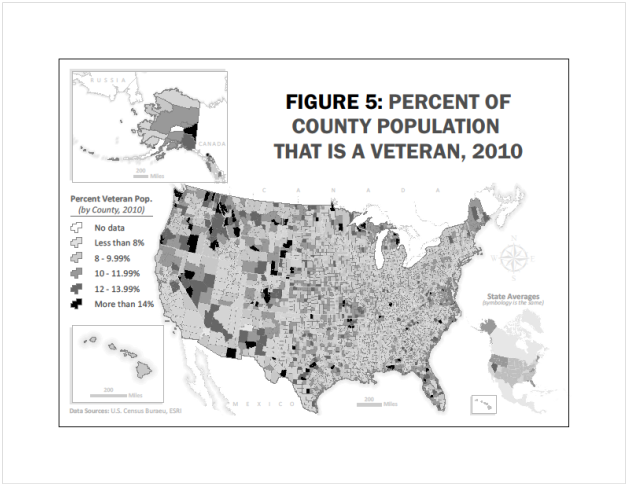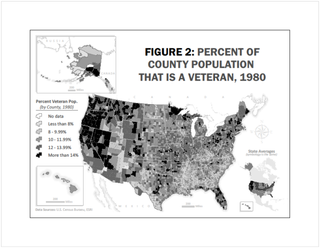US Veterans Increasingly Segregated from Civilians

When the United States celebrated Veterans Day on Sunday, did you personally thank any soldiers for their service? That might depend on where you live.
As the population of veterans in America is declining, it's also becoming more and more geographically segregated from civilians, gravitating toward military bases and rural areas, a new study shows.
In 1980 more than 28 million veterans lived in the United States, making up 12 percent of the population. By 2010, the veteran population dropped to 22 million, or just 7 percent, as both the number of active duty troops and living World War II veterans declined.
At the same time, clusters of veterans have vanished from certain parts of the country. In 1980, 145 U.S. counties were made up of more than 15 percent veterans, compared with 49 counties with 15 percent veterans in 2010, the study found.

The paper's author, Jay Teachman, a sociology professor at Western Washington University, wrote that this drop in the percentage of veterans has hit some areas disproportionately hard. His diagrams show that these changes were particularly dramatic for the Northeast and the western third of the country. Teachman wrote that by 2010, counties with the highest percentage of veterans often were associated with nearby military installations.
The researcher also found a slightly negative relationship between county size and the proportion of veterans by 2010. In other words, smaller counties were more likely to have larger percentages of veterans, which is consistent with previous research that has found veterans tend to prefer more rural areas.
"The extent to which the veteran population becomes a smaller proportion of the population and is increasingly concentrated means that there will be less contact between the veteran and nonveteran populations," Teachman writes in the journal Armed Forces & Society. "The increasing geographic concentration of veterans may hold consequences for civil-military relations."
Sign up for the Live Science daily newsletter now
Get the world’s most fascinating discoveries delivered straight to your inbox.
Follow LiveScience on Twitter @livescience. We're also on Facebook & Google+.












